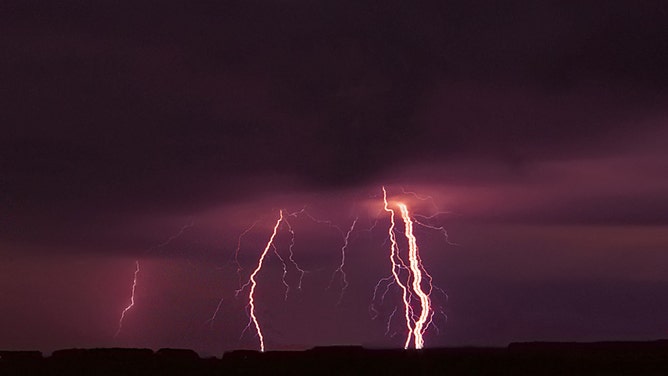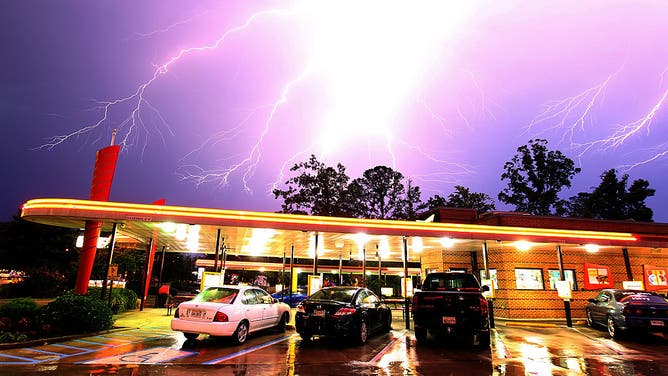Why heat fuels severe weather
Extra heat in the atmosphere nourishes storms. The more heat energy that goes in, the more vigorously a weather system can churn.

Ribbon lightning rains down over Texas near Lubbock from a severe thunderstorm.
(Getty Images)
While heat is not the sole factor for thunderstorm development, it plays a key role in fueling severe storms.
There are two key factors that fuel their formation: Convective Available Potential Energy (CAPE) and strong wind shear.
CAPE is a measure of how much raw energy is available for storms; it relates to how warm, moist, and buoyant air is in a given area. Wind shear is a measure of how the speed and direction of winds change with altitude.
Extra heat in the atmosphere nourishes storms. The more heat energy that goes in, the more vigorously a weather system can churn.
For a severe thunderstorm, the ingredients that must be present are moisture, instability, lift and strong speed, and directional storm-relative wind shear.
Severe storms derive their energy from the heat released by the condensation of water vapor. This "latent heat" energy drives thunderstorm clouds high into the atmosphere.

Lightning rolls through the sky over Sonic restaurant in the Denbigh section of Newport News, Virginia, Saturday, June 30, 2012.
(Rob Ostermaier/Newport News Daily Press/Tribune News Service via Getty Images)
On a hot summer day, the surface of the Earth is heated by the sun. The Earth's surface then heats the air just above the ground through the process of conduction.
The action of warm air rising and cold air sinking (convection) plays a key role in the formation of severe thunderstorms. This is due to that transferring of heat from the land surface to the upper levels of the atmosphere.
If this warm surface air is forced to rise, it will continue to rise as long as it weighs less and stays warmer than the air around it.
As the warm air lifts higher and higher, it causes a storm cloud to grow taller and taller.
In a big thunderstorm cloud, there are now strong upward winds and downward winds happening at the same time. These are called updrafts and downdrafts.
This is the most dangerous stage of the storm when tornadoes, hail, winds, and flooding can happen. Updrafts continue to fuel the storm with warm, moist air. But once a storm runs out of updrafts, it starts to weaken.
The ability of the ground to heat up quickly is why you see the most severe storms form over land rather than oceans.